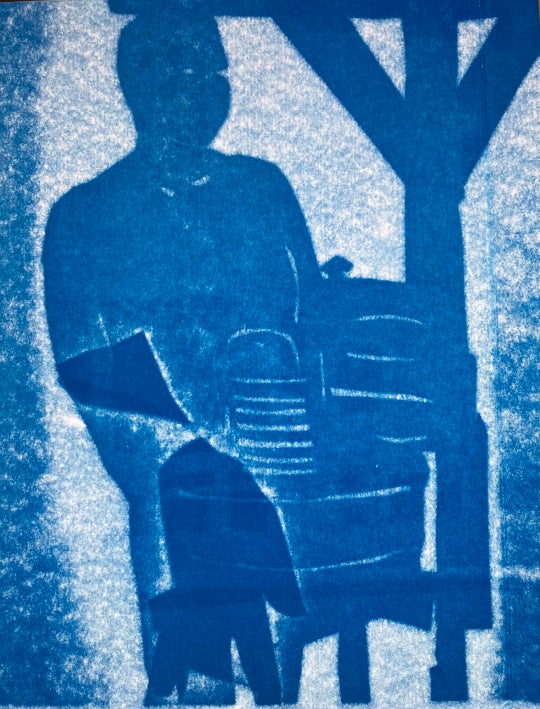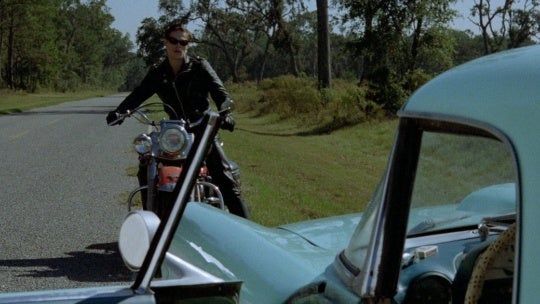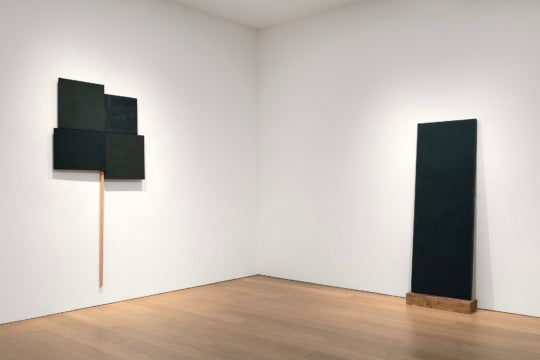
It’s unusual for a contemporary art book to be published with the words “art” and “religion” both in the title. Pairing those two concepts, at least in the modern art world, is something of a taboo. For a book on the fiery Baptist preacher and artist Howard Finster, though, the connection makes sense. That’s what makes Norman Girardot’s Envisioning Howard Finster: The Religion and Art of a Stranger from Another World enticing.
Born in Valley Head, Alabama, in 1916, Finster preached at about 40 churches before receiving, at age 59, a “call from God » to make 5,000 pieces of “sacred art.” He made around 46,000 pieces of art before passing in 2001. His art was an extension of, not departure from, his life and mission as a religious man; therefore, his artwork accounted for his religion as a frame through which to understand him was seen as a productive effort. Unfortunately, that opportunity was missed in this book.
Girardot is a former comparative religion professor at Lehigh University. Most of his scholarship is in Daoism, but his longtime passion for Howard Finster is genuine. This book, released last June, is part diaristic chronicle of his involvements with Finster, his art and family, and part overview of the artist’s self-crafted persona and visual production. Most of all however, it is a fabrication of what Finster has become in the mind of a “formerly-Catholic-but-now-semisecular-and-romantically-inclined-quasi-Daoist-religion-professor-from-the-North,” as Girardot describes himself. That particular side of Finster ends up having a remarkable likeness to the author.
Despite Girardot’s gushy infatuation with the preacher and artist, he will not accept Finster on Finster’s own terms. The author admits it’s “important” to know “people are always having spiritual experiences and those experiences are always being mediated by the imagination and how that imagination is shaped by a particular culture at a particular time.” Yes or no, Finster insists, “It’s not my imagination!” He goes on to say, “you people [interpreted by Girardot to certainly include professors] are always writing about my imagination.” Finster says, “It makes me sick! … It comes from God!” Nevertheless, Girardot presses, “As much as possible, I tell here the mythic, if not simple gospel, truth about Finster’s incredible stories, religion, and art.”

Across the book, the author has little to say about Finster’s religion in particular. Nothing insightful is offered about his Baptist background and its theological underpinnings that could inform his art, especially in the way of religious metaphysics. The words “pastor” and “preacher” or even “Jesus” and “Christianity” occur fewer times than expected, at least compared to the word “shaman,” which is a generic umbrella term for a seer who can enter some lofty spiritual dimension. Finster, in Girardot’s writing, is chopped off, sanded down, and glossed over. “Throughout my endeavors,” the author explains, “I have tried to apply the ancient Chinese Daoist principle of unlearning with respect to many of the professional writing habits I developed in my long career as an academic.” This “unlearning” is a trade, exchanging dispassionate intellectual rigor for Girardot’s “mythic” truths. Girardot’s skewed perception is the price paid by the reader who wanted to know more, rather than less, about Finster.
The author’s handle on art is likewise unsound. He claims art criticism is “on the wane” by citing, in a footnote, James Elkins’s What Happened to Art Criticism? It’s a good book but doesn’t quite argue what Girardot seems to think it does, and it was also written well before most online art publications existed. Art criticism, thanks to the Internet, is now being written in greater quantity and with greater range than ever before. To characterize how Girardot thinks Finster has been discounted in the “big city” art world, he devotes three pages to “outspoken cultural critic” Terry Castle’s distaste for outsider art and the “repulsive” Finster. She’s a literary critic—no art critic is given nearly this much space. But we do get the viewpoint of Peter Schjeldahl, art critic for The New Yorker, who makes incisive commentary on Finster, even on his theology, which should’ve been offered earlier in the book.
The art in the Envisioning Howard Finster is more disappointing than the writing. Three of the black-and-white reproductions of Finster’s artwork are from Girardot’s own collection. Two of the color plates are too, but they weren’t made by Finster; they are of Finster, one painted by a kitschy artist now selling work on eBay and another made by Girardot himself. It’s a cardboard reproduction of Gainsborough’s Blue Boy (1770) with parts of the painting, including the head, covered with Finster’s imagery, such as an angel and Coke bottle. On the back, in lieu of Finster’s real Bible verses written en verso, Girardot inscribes what he calls “a mock Bible verse.” Much praise for his very own “masterpiece” (that word is actually used) emerges twice in the text. Finster’s inclusion in the 1984 Venice Biennale is found in a footnote. Why a university press published this mystifying vanity project—where Girardot, like God, creates Howard Finster in his own image—should be another story to tell.
Rob Colvin is a painter and art writer in New York City.




